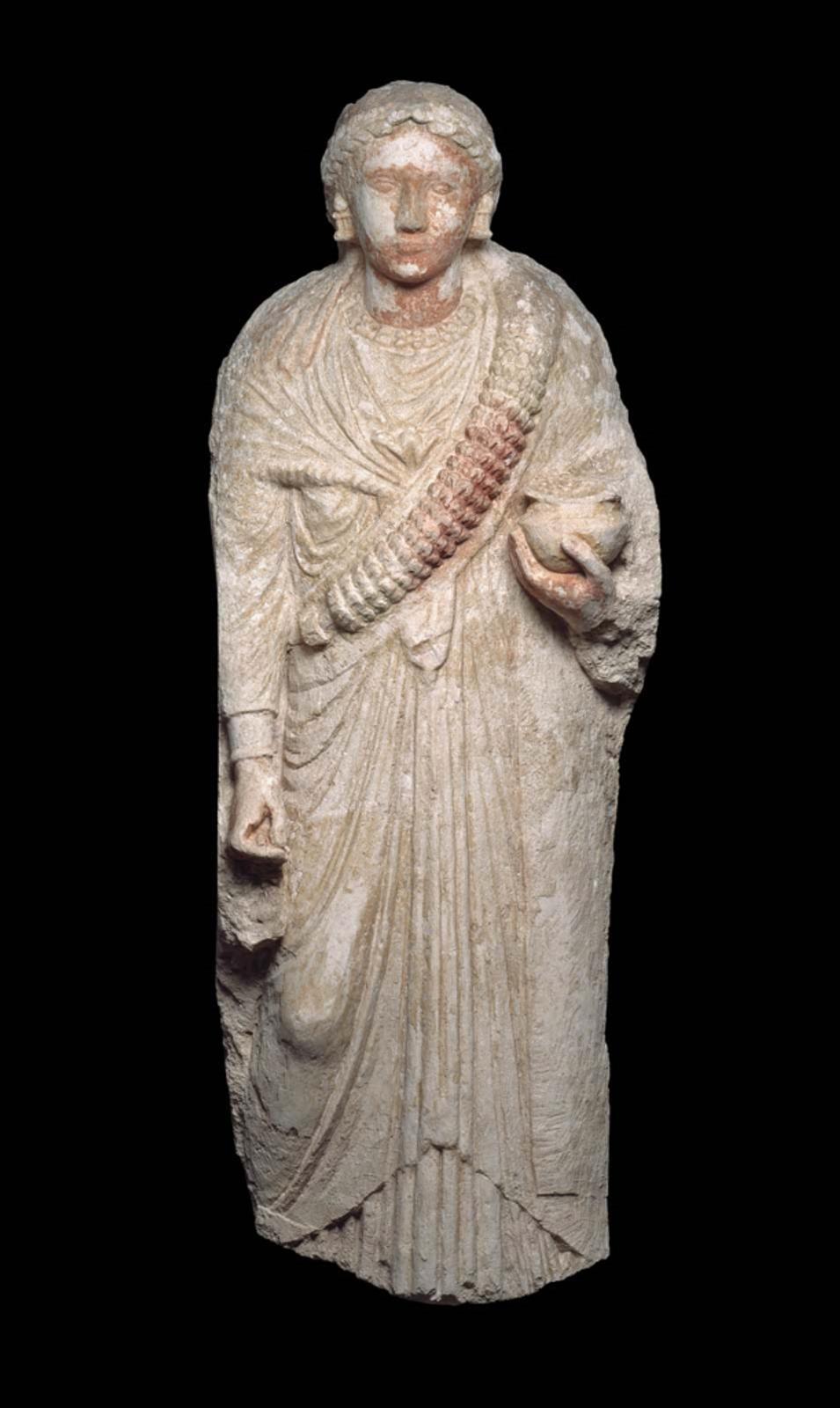Advanced Search 

Portrait stele of a woman
Egyptian
Greco-Roman Period
3rd to early 4th century A.D.
Medium/Technique
Limestone with traces of paint, carved
Dimensions
Height x width x depth: 141 x 53 x 23 cm (55 1/2 x 20 7/8 x 9 1/16 in.)
Credit Line
Mary S. and Edward J. Holmes Fund
Accession Number1972.875
ClassificationsArchitectural elements – Stele
Catalogue Raisonné
Sculpture in Stone and Bronze (MFA), no. 049.
DescriptionThis life-size tomb stela is one of about twenty, mostly from the city cemetery of el-Bahnasa (Oxyrhynchus) in Middle Egypt. El-Bahnasa was a wealthy and thriving community in the Roman Period, and is now best known as the source of thousands of papyri that cast a flood of light upon the daily lives of its inhabitants. The richly clad figure is carved in such high relief that it might easily be mistaken for sculpture in the round, yet it was designed to fit into an architectural niche.
The educated elite of Oxyrhynchus considered themselves to be Hellenes, but they had lived in Egypt for generations and had become Egyptianized in spite of themselves. At first glace there seems nothing particularly Egyptian about the representation in this stela, but as with the painted funerary portraits, a Greco-Roman visual language was put in the service of Egyptian religious ideas about the afterlife. The deceased is assimilated with a deity — the corkscrew curls and knotted garment were attributes of Isis as well as other fertility goddesses such as Ge (Earth) and Euthenia (Abundance) for the Romans (see p. 189). In her left hand she holds a ritual vessel, perhaps a container for incense. As a work of art this stela is on the threshold where pagan blended into early Christian, for the same late antique visual language, reinterpreted in Christian terms, had a new life in the late Roman Period.
At first the Roman emperors supported the Egyptian temples but their patronage gradually died out. The last major building projects in Egypt were carried out in the mid-second century A.D. In the third century imperial support for the temples virtually ceased. Meanwhile Christianity was catching on rapidly. With the formal division of the Roman Empire into eastern (Byzantine) and western halves in 395 a new era began.
The educated elite of Oxyrhynchus considered themselves to be Hellenes, but they had lived in Egypt for generations and had become Egyptianized in spite of themselves. At first glace there seems nothing particularly Egyptian about the representation in this stela, but as with the painted funerary portraits, a Greco-Roman visual language was put in the service of Egyptian religious ideas about the afterlife. The deceased is assimilated with a deity — the corkscrew curls and knotted garment were attributes of Isis as well as other fertility goddesses such as Ge (Earth) and Euthenia (Abundance) for the Romans (see p. 189). In her left hand she holds a ritual vessel, perhaps a container for incense. As a work of art this stela is on the threshold where pagan blended into early Christian, for the same late antique visual language, reinterpreted in Christian terms, had a new life in the late Roman Period.
At first the Roman emperors supported the Egyptian temples but their patronage gradually died out. The last major building projects in Egypt were carried out in the mid-second century A.D. In the third century imperial support for the temples virtually ceased. Meanwhile Christianity was catching on rapidly. With the formal division of the Roman Empire into eastern (Byzantine) and western halves in 395 a new era began.
ProvenanceProbably from Oxyrhynchus (el-Bahasna). By 1972: with P. G. Sier, Hilversheim, Holland; 1972: purchased by the MFA from P. G. Sier, September 13, 1972.
Copyright
